For those lucky enough to get a seat at this year’s sold-out Canadian Mining Hall of Fame dinner in Toronto on Jan. 15, inductee Ian Telfer did not disappoint. Within moments of taking the stage, donning a pair of gold-hued shoes, the mining entrepreneur ripped up the speech he had prepared and spoke off-the-cuff about his career and life. For the 120 people on the waiting list who couldn’t get tickets — and everyone else who missed it — here’s a transcript of his remarks:
“I was going to wear a gold lamé jacket, but of course Pierre [Lassonde] had already done that, and you know how Pierre doesn’t like to get upstaged.
When I first heard about [my induction into the Canadian Mining Hall of Fame] from Pierre, and he congratulated me, and I told him how thrilled I was, and surprised I was, and he said: ‘No, no, no, working on 30 mines in 20 countries and developing 10 projects, and dealing with all these people, this is something you probably should have expected.’ So I said: ‘Listen, that’s fantastic,’ and ‘how long would you like me to speak?’ And he said ‘four minutes,’ so here we go.
Again, it’s such an honour and I’m so thrilled to be here, and I’m so thrilled to be here among so many of my friends and so many of my colleagues. I think of the 820 people here, I think I know 600 of you, I think I’ve done deals with companies involving 300 of you, I think I’ve employed 100 of you, I think I’ve paid fees to 150 of you, and you know who you are, and I think I’ve been sued by four of you, and you know who you are.
It’s incredible when I look back on 30 years and again, virtually everyone I’ve met in the business in that time is in this room. And as Pierre said, I was thinking: ‘I’ve made so many friends, and I really haven’t made an enemy.’ And I was thinking about it, that’s just incredible, all those negotiations, all those takeovers, all those mergers, all those lawsuits, and I didn’t make one enemy. And then I thought, now wait a sec, now that I think about it, I did make one enemy, and Sean Roosen, I’m so glad you came tonight. Sean, if you didn’t know, was the former president of Osisko, and we had an interesting set of negotiations earlier this year. I’m glad to see you. I’m glad you could make it, glad you came out to it.
I wanted to start by thanking my wife Nancy, and my family. My son Bradley is here, Samantha is with him, my other son couldn’t make it because he’s about to have another son, sometime this week. Talk about a confluence of incredible situations that the night Grampa is getting an award, another grandson is being born — a great situation to be in.
The mining business as we all know is a challenging business. I mean, in good times it’s fantastic and in tough times it’s very, very tough. We’ve all lived through these cycles and we all still love the business. But some days, and I know you’ve all had these days, you get up in the morning, and the first thing you hear on CNBC is that gold is down $30 and you go, ‘God, another day like this. It’s just going to be brutal at the office.’ And then you get into the office and the first email you get says that the landowners around your mine are protesting, and have blocked off the mine, and now the mine can’t operate — ‘Oh, God.’ And then the next thing you hear — you turn on the news, and there’s the president of the country saying that they’ve raised the royalty rates from 5% to 10%. You’ve all been through that. Those days are awful. Of course over at Kinross that’s called ‘Tuesday.’
The other thing you’ve probably noticed tonight is that at the Barrick table there are 10 seats, but there are only five people. [Laughter.] Is it too soon? But we know we’ve got all of the senior executives because all five of them are co-presidents. They tried to put the Newmont and Barrick tables together here tonight, but as so often happens, they just couldn’t seem to agree on what wine to have, so they are still at separate tables.
So standing up here at the Mining Hall of Fame … as a graduate of political science, it’s not a path that anyone would expect or anyone could even imagine. My first entry into the mining industry was in my mid-thirties. I had no real affinity towards it. I had taken no geology courses. But as an accountant it was an opportunity and it seemed interesting.
But once I got into it, two events occurred that really turned me into a passionate believer in the industry. The first one was the first time I ever saw a garimpeiro in Brazil, panning gold out of a muddy stream. Now a number of you in the industry have seen this, the rest of you have seen this on television or in videos. But the first time I actually saw that and saw somebody taking money right out of the ground, it was like a bolt of lightning to me. It really jolted me. And subsequent visits bringing down analysts and brokers and investors, I saw that same reaction. I mean, there is something special about gold, and it certainly affected me when I saw it that first time, and it still affects me. And in those days and in those locations, you could literally take the money out of the ground. The garimpeiro would pan the gold, take the powder, go into town and spend it. So it was a real event.
The other event that occurred that really got my attention was the first junior company I got involved in and helped form — TVX. And you’ve got a few people here who were part of that TVX adventure. And so I was the accountant, and didn’t really know how this worked, and we had no money and we were going to raise money and go to Brazil. And someone brought some investment bankers over, and they explained the process to me. And so I said: ‘Well, how does this work?’ And they said: ‘Well, you have to go to New York and London and Paris, and stay in four-star hotels.’ And I said, ‘Oh yeah? OK.’
And they said: ‘And you have to go to three-star Michelin restaurants for breakfast, lunch and dinner to talk to clients,’ and I go, ‘Alright, OK,’ and I start to understand this.
And they said: ‘And you make your presentations and if you do a good job at the end of two weeks, we’ll give you $25 million.’ ‘Alright!’ I said, ‘and who pays for all of this?’ And they said: ‘Oh, we pay for all of this.’ And I said: ‘Oh, terrific. What’s your commission on this?’ And they go: ‘Five percent.’ I go: ‘Five percent. Let me get this straight: I go to New York, London and Paris, you pay all the bills, we raise $25 million, you get $1 million and I get $24 million,’ and they go, ‘Right.’
‘Ah, right, I think I understand this.’
And then I thought: ‘These guys are crazy.’ I mean, if I could put all this together I would charge a lot more than $1 million. But of course, years later when all the mining CEOs were living in Mississauga and the investment bankers were living in Rosedale, I started to figure out how the system really worked.
But seriously, the idea, and again, this was in the mid-80s, and to raise money or to spend it in a country like Brazil was unheard of, no one had ever done that before. The companies involved in that part of the world were the Norandas and the Placers that had assets in more well-known locations, and therefore could explore faraway places. But to just take money from Canada and spend it all in developing countries was new at t
he time. Very exciting. And again, there are people in this room that helped make those dreams come true, helped raise that money, and helped create the companies, and over the years I have been involved in creating a number of companies, and going to so many places.
There has been some discussion here about luck and timing, and I have to say they are huge factors in the success of any organization, and I think even more so in a mining company. And one of the incredibly fortunate things that happened to me, that no one could ever have predicted, is that during my career I got to work with four of the best mining entrepreneurs that have ever existed. I spent 10 years learning about imagination from Eike Batista. I spent five years learning about promotion from Robert Friedland. I spent five years learning how to dumb down presentations so that institutional investors could understand them from Frank Giustra, and then I learned about absolute laser focus from Rob McEwen. And all those lessons, I have picked a little from all four of them, and figured out a little bit of what they were able to do — and who would have ever known that all four of them would turn out to be the best entrepreneurs in the mining industry we’ve ever created? So it was an incredible experience.
I would like to acknowledge some of the groups of people here tonight. I’ve got friends here that I went to high school with. I’ve got friends here who I went to university with. I’ve got friends that I worked with at Hudson Bay Mining, I have friends here from the TVX adventure, I’ve got friends here from the Vengold adventure, and there is actually one person here who was involved in my adventure as an Internet entrepreneur that went bankrupt, and yeah, oh yeah, he’s serving coffee over at Table 42. Good to see you here. I’d also like to acknowledge there’s a table here from the University of Ottawa, thank you guys for coming down.
My experience with the University of Ottawa was that it was the biggest break I ever got, and it changed my life. That — combined with learning about how the investment banking world worked — were the two significant things I learned that have led to all of this.
In looking at the future, as Frank Giustra said, there was a time in 2001 when we were just certain that the price of gold was going to go up, and so our panic was to make sure we had some gold assets that would participate in that increase, and our timing worked out very well, and gold went on a 10-year run and basically, Wheaton River and Goldcorp got built in that period of time. And so, as you can imagine, over the past three or four years, people have said to me: ‘Hey listen, if you ever get that feeling you had in 2001, give me a call.’ And so I’d just like to say that I think we are at that stage again. I think the future does still look very good for the mining industry, and for the price of gold, and for young people getting into our industry.
One thing I have noticed is that we all have friends in other industries and other professions, and if you ask them would they want their children to go into their profession, a lot of people … are pretty cautious about encouraging their children to go into them. Most people I know in the mining business, if their kids wanted to go into that business, I think they’d be pretty happy about it, and they would encourage them to do it.
It’s an important business for Canada. It’s one of the businesses in which Canada is considered a leader around the world, I’m proud to be part of that business, and when I look at all the places I’ve got to visit and the people I’ve got to meet — and again, so many of them being in this room — and I look at the contribution that the mines make, having been involved in so many from exploration to production-stage projects in the Papua New Guineas and the Brazils and the Chiles, etc., around the world.
When you go back and see how they have changed peoples’ lives, and how many people have been educated, and how many people have been trained, and how many people own homes, etc., etc., it makes me very, very proud to be part of this industry. And while the non-governmental organizations may not appreciate what we do out there, I really do, and it gives you that good feeling that you are doing well and that you are doing good at the same time.
It’s been an incredible 30 years. And I’m looking forward to continuing to try to make a contribution going forward … it’s been an incredible ride.”

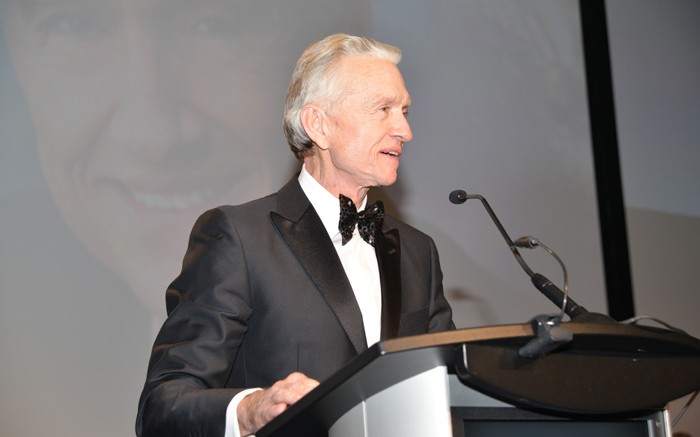
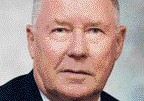
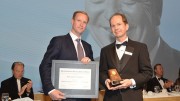
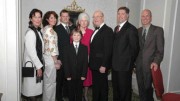
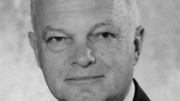
Be the first to comment on "Telfer dazzles at Mining Hall of Fame soiree"